The order of these listings is determined by the Icelandic telephone book algorithm (alphabetically by first name).
 |
Albert C-C. Yang, of Taipei Veterans General Hospital and National Yang-Ming University, Taiwan, is one of several entrants in the PhysioNet/Computers in Cardiology Challenge 2002 who contributed an RR interval time series model. Albert is the creator of IBS, a novel linguistic analysis of time series, for which he has contributed software together with a tutorial on the IBS method. |
 |
Aleš Smrdel, of the Laboratory of Biomedical Computer Systems and Imaging at the University of Ljubljana, is a coauthor of the EVAL_ST software for evaluating ST episode detection analyzers. Aleš also contributed to the development of the Long-Term ST Database. |
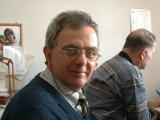 |
Alessandro Taddei, and his colleagues at the CNR Institute of Clinical Physiology in Pisa, contributed more than half of the European ST-T Database to PhysioBank. Alessandro was also one of the major contributors to the Long-Term ST Database. |
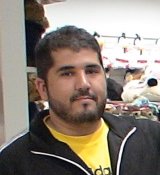 |
Ali Saeed, formerly of the Laboratory for Computational Physiology at MIT, adapted Matt Oefinger's HERMES waveform viewer for use on PhysioNet and also contributed to CVSIM. |
 |
Alistair Johnson, of the University of Oxford, contributed to the random search toolbox, rstoolbox. |
 |
Ary Goldberger (at right in the photo) is the principal investigator of the Research Resource for Complex Physiologic Signals at the Beth Israel Deaconess Medical Center, and is an author of several contributed papers and tutorials. |
 |
Attila Priplata, of Boston University, contributed a database of measurements of postural sway, Noise Enhancement of Sensorimotor Function. |
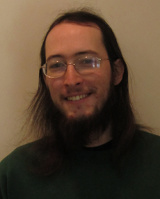 |
Benjamin Moody, of the Laboratory for Computational Physiology at MIT, led the design and implementation of PhysioNet's automated system for sandboxed evaluation of entries in our annual open challenges. He has made numerous contributions to the WFDB Software Package, and he has designed and implemented the software needed to create PhysioBank's largest data collection, the open-access MIMIC II Waveform Database, from available proprietary data streams, and to synchronize them with the companion MIMIC II Clinical Database. |
 |
Bill D.C. Lin, of Ryerson University, is one of several entrants in the PhysioNet/Computers in Cardiology Challenge 2002 who contributed an RR interval time series model. |
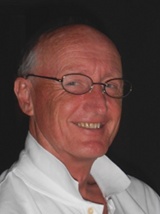 |
Bob Kemp, of the Sleep Centre at MCH-Westeinde Hospital in Den Haag, is one of the designers of European Data Format (EDF), and has contributed the Sleep-EDF Database. |
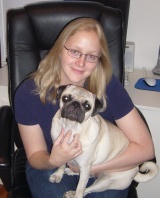
|
Catherine Dunn, formerly of the Laboratory for Computational Physiology at MIT, contributed CVSIM, an interactive cardiovascular simulator for research and education. |
 |
C-K. Peng, of the Margret and H.A. Rey Laboratory for Nonlinear Dynamics in Medicine at the Beth Israel Deaconess Medical Center, is a co-investigator of the Research Resource for Complex Physiologic Signals, the creator of the widely-used detrended fluctuation analysis technique, and is an author of several contributed papers. |
| Douglas Lake, of the University of Virginia, is one of the originators of the method of sample entropy (SampEn) analysis. He and his colleague Randall Moorman have contributed a pair of reference implementations of the SampEn method to PhysioToolkit. | |
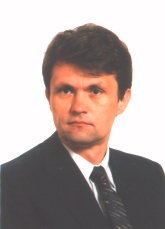 |
Dragan Gamberger, of the Rudjer Boskovic Institute, Zagreb, is one of several entrants in the PhysioNet/Computers in Cardiology Challenge 2002 who contributed an RR interval time series model. |
 |
Floyd Harriott, formerly of Stellate Systems, contributed an ECG waveform generator. |
 |
Franc Jager, who established the Laboratory of Biomedical Computer Systems and Imaging at the University of Ljubljana, contributed the Long-Term ST Database Samples, the SEMIA time series viewer, and two papers about the Long-Term ST Database. |
 |
Gari Clifford, of the Laboratory for Computational Physiology at MIT, has contributed ECGSYN, software that can generate realistic ECG signals, in collaboration with Patrick McSharry. While Gari was at Oxford University, he and Patrick also contributed an RR interval time series model which they created for the PhysioNet/Computers in Cardiology Challenge 2002. Gari has also developed a set of tutorial examples included in the WFDB_tools package of Matlab code for access to PhysioBank. |
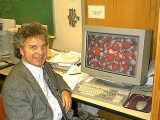 |
Gene Stanley, of Boston University, developed the Exploring Patterns in Nature tutorials with Paul Trunfio. |
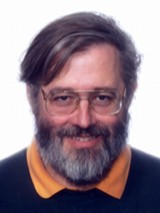 |
George Moody, of the Laboratory for Computational Physiology at MIT and the Margret and H.A. Rey Laboratory for Nonlinear Dynamics in Medicine at the Beth Israel Deaconess Medical Center, is a co-investigator of the Research Resource for Complex Physiologic Signals, the architect, technical director, and webmaster of PhysioNet, and the creator of the annual PhysioNet/CinC Challenge series. He has made many contributions to PhysioNet, notably including the WFDB Software Package, the PhysioBank ATM and Search, LightWAVE, and the design and implementation of PhysioNetWorks. |
 |
Ikaro Silva, of the Laboratory for Computational Physiology at MIT, contributed a database of Evoked Auditory Response in healthy subjects across a wide range of stimulus levels. Ikaro also designed and managed the 2011 PhysioNet/CinC Challenge (Improving the quality of ECGs collected using mobile phones) and contributed the API used by challenge participants, and has had a major role in all of the subsequent annual challenges. Ikaro is the creator of the WFDB Toolbox for MATLAB and Octave, a reimplemented and expanded successor to Michael Craig's WFDB Toolbox for MATLAB. |
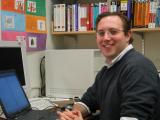 |
Isaac Henry, formerly of the Margret and H.A. Rey Laboratory for Nonlinear Dynamics in Medicine at the Beth Israel Deaconess Medical Center, has made many contributions to PhysioNet, including PhysioTour, GTKWave, and a port of the XView toolkit used by WAVE to MS-Windows. |
 |
James Xin Sun investigated cardiac output estimation using arterial blood pressure waveforms for his master's thesis in the Laboratory for Computational Physiology at MIT, and contributed reference implementations of eleven CO estimators to PhysioNet. |
 |
Jeff Hausdorff, of the Tel-Aviv Sourasky Medical Center at Tel Aviv University, and the Margret and H.A. Rey Laboratory for Nonlinear Dynamics in Medicine at the Beth Israel Deaconess Medical Center, has contributed a growing series of gait databases to PhysioBank, and is an author of several contributed papers and tutorials. |
 | Jennifer Healey, of the Margret and H.A. Rey Laboratory for Nonlinear Dynamics in Medicine at the Beth Israel Deaconess Medical Center, has developed several contributions to PhysioNet, including the Heartprints software package. |
 |
Jie Lian, of Micro Systems Engineering, Inc., together with his colleagues Dirk Müssig and Volker Lang, have contributed the AFVP model, which generates realistic PP and RR intervals in atrial fibrillation. |
 |
Jesus Olivan Palacios, a clinical neurophysiologist at the Hospital Carlos III in Madrid, created the tutorial Applying PhysioNet tools to manage neurophysiological signals, and the web site NeuroTraces, where he has written related tutorials of interest. |
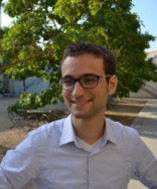 |
Joachim Behar, of the University of Oxford contributed to the Physionet Challenge 2013 organisation and database, the fetal ECG simulator (fecgsyn), and the random search toolbox (rstoolbox). |
 |
Joe Mietus (deceased), formerly of the Margret and H.A. Rey Laboratory for Nonlinear Dynamics in Medicine at the Beth Israel Deaconess Medical Center, had multiple contributions to PhysioNet, including MIT-BIH databases as well as widely used software for heart rate variability (HRV) analyses. |
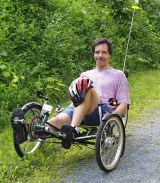 |
Jon Peterson, of Creare, Inc., together with his colleague, Dave Kynor, contributed the Intracardiac Atrial Fibrillation Database to PhysioBank. Jon commutes on his recumbent trike seen at left. |
 |
Jonas Carlson, of the Lund (Sweden) University Hospital, contributed WFDB_tools, a set of wrapper functions that allows Matlab users to use the WFDB library to read and write signals and annotations such as those available in PhysioBank. |
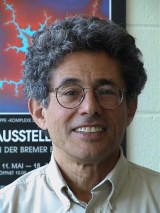 |
Leon Glass, of McGill University, is a co-investigator of the Research Resource for Complex Physiologic Signals, and a contributor to the Heartprints project. |
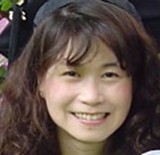 |
Li-wei Lehman, of the Laboratory for Computational Physiology at MIT, has contributed in many ways to the ongoing MIMIC II project. With co-authors Margaret Douglass, Ishna Neamatullah, and Bill Long, Li-wei contributed software for deidentification of free-text medical records to PhysioToolkit. |
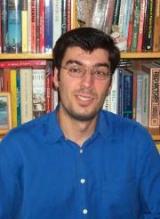 |
Luis Amaral, formerly at Boston University, contributed a brief overview of multifractal time series. While at BU, Luis worked with H. Eugene Stanley to propose and develop one of the three original core projects of the PhysioNet Resource. Luis is now at Northwestern University. |
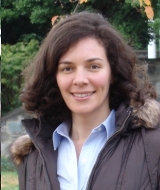 |
Madalena Costa, of the Margret and H.A. Rey Laboratory for Nonlinear Dynamics in Medicine at the Beth Israel Deaconess Medical Center, has pioneered the method of multiscale entropy (MSE) analysis, and has contributed a tutorial on this subject together with software. Madalena has also contributed to several other projects in PhysioToolkit, including the Heartprints software package. |
 |
Manojit Roy, of the University of Michigan, is one of several entrants in the PhysioNet/Computers in Cardiology Challenge 2002 who contributed an RR interval time series model. |
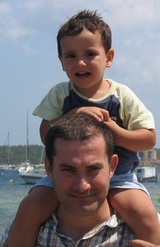 |
Marcelino Martinez, of the Digital Signal Processing Group (GPDS) at ETSE, University of Valencia, has contributed the Non-Invasive Fetal Electrocardiogram Database to PhysioBank. On Marcelino's shoulders is his son and research collaborator. |
 |
Matt Oefinger, while a graduate student at MIT, contributed the Java-based Hermes waveform viewer. |
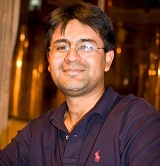 |
Mauricio Villarroel, formerly of the Laboratory for Computational Physiology at MIT, contributed a Java applet implementing ECGSYN (an ECG synthesizer by Patrick McSharry and Gari Clifford). Mauro wrote the Java implementation while at the Universidad Católica Boliviana. He has made numerous other contributions since joining the MIT LCP, including work on the MIMIC II Database and the HERMES waveform viewer. |
| Michael Craig, formerly of the Laboratory for Computational Physiology at MIT, created and contributed the WFDB Toolbox for MATLAB. | |
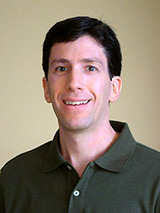 |
Michael Rosenstein, of the University of Massachusetts, contributed software for estimating Lyapunov exponents and a paper describing the algorithm. |
 |
Michele Emdin played a major role in developing and annotating the European ST-T Database, and also provided critical clinical input to the selection and annotation of the Long-Term ST Database. He is also an author of several contributed papers. |
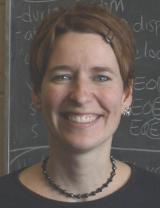 |
Michèle Titcombe, of McGill University, contributed a database of tremor velocity recordings from subjects with Parkinson's disease. |
| Miguel Garcia-Gonzalez, of the Universitat Politecnica de Catalunya in Barcelona, is one of several entrants in the PhysioNet/Computers in Cardiology Challenge 2002 who contributed an RR interval time series model. | |
 |
Miha Amon, of the Laboratory of Biomedical Computer Systems and Imaging at the University of Ljubljana, developed a Legendre Orthonormal Polynomial Transformation (LOPT) for the ST segment of the electrocardiogram, and contributed time series of LOPT coefficients and residual errors for the ST segments of the Long-term ST Database. |
 |
Mohammed Saeed, while a graduate student at MIT and a medical student at Harvard Medical School, took a leading role in establishing the MIMIC II Database. |
 |
Pablo Laguna, of the University of Zaragoza, has contributed ecgpuwave to PhysioToolkit, the QT Database to PhysioBank, and a pair of papers describing the database and how to use it. |
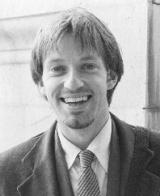 |
Patrick McSharry, of Oxford University, is one of several entrants in the PhysioNet/Computers in Cardiology Challenge 2002 who contributed an RR interval time series model. |
| Paul Albrecht contributed plt, which he wrote during his MIT master's thesis research, in which he also created the MIT-BIH ST Change Database. | |
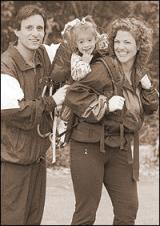 |
Paul Trunfio and his colleagues at the Center for Polymer Studies at Boston University have contributed the hands-on tutorial series, Exploring Patterns in Nature. |
 |
Penny Ford-Carleton (second from right in the photo at left) and Jeffrey Cooper contributed the MGH/MF Waveform Database, which they developed with their colleagues in the Massachusetts General Hospital Anaesthesia/Bioengineering Unit. |
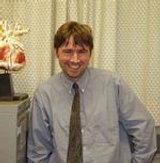 |
Philip Langley, of the Freeman Hospital, Newcastle upon Tyne, is one of several entrants in the PhysioNet/Computers in Cardiology Challenge 2002 who contributed an RR interval time series model. Philip and his colleagues have participated in every PhysioNet/CinC Challenge to date, and they were the winners of the 2003 Challenge. |
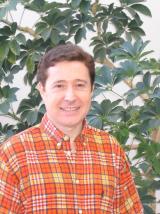 |
Plamen Ch. Ivanov, of Boston University, is a co-investigator of the Research Resource for Complex Physiologic Signals, and has made several contributions, including a large set of synthetic time series with known properties and a pair of papers (1, 2) that make use of them to study properties of the DFA method. |
 |
Raimon Jané, of the Universitat Politècnica de Catalunya and Institute for Bioengineering of Catalonia (IBEC) in Barcelona, has contributed to PhysioToolkit with the implementation of the widely used QRS detector and waveform boundary recognition software ECGPUWAVE. |
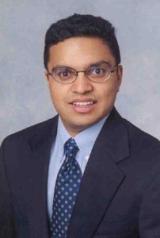 |
Rama Mukkamala, formerly of the Laboratory for Computational Physiology at MIT, is the creator and contributor of RCVSIM. Rama is now at Michigan State University. |
 |
Randall Moorman, of the University of Virginia, is one of the originators of the method of sample entropy (SampEn) analysis. He and his colleague Doug Lake have contributed a pair of reference implementations of the SampEn method to PhysioToolkit. |
 |
Ray Chan and Godtfred Holmvang, of the Boston Heart Foundation at MIT and the Massachusetts General Hospital, contributed samples of MR images. |
 |
Rich Bowser, formerly at Creighton University, worked with Floyd Nolle to assemble the Creighton University Ventricular Tachyarrhythmia Database. |
 |
Robert Tratnig, of the Vorarlberg Institute of Applied Sciences, contributed a Matlab viewer for PhysioBank records. |
 |
Roger Mark is the director of the Laboratory for Computational Physiology at MIT, a co-principal investigator of the Research Resource for Complex Physiologic Signals, and an author of several contributed papers. Roger has had a leading role in the creation of many of the PhysioBank databases. |
| Roman Dorn, of the University of Ljubljana, is one of the authors of the SEMIA visualization tool. | |
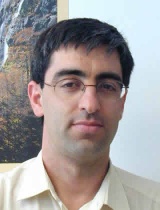 |
Salvador Olmos, of the University of Zaragoza, together with Jose Garcia Moros, contributed a Matlab/Octave interface to PhysioBank. Salvador also maintains the PhysioNet mirror in Zaragoza. |
 |
Sara Mariani, while visiting the Laboratory for Computational Physiology at MIT from the Politecnico di Milano, coordinated preparation of the CAP Sleep Database and its documentation, and contributed it to PhysioBank. |
 |
Scott Greenwald, while a graduate student at MIT, created the MIT-BIH Supraventricular Arrhythmia Database and the MIT-BIH Malignant Ventricular Arrhythmia Database. |
 |
Steven Swiryn, of Northwestern University, provided many of the recordings contained in the PAF Prediction Challenge Database, and all of those contained in the AF Termination Challenge Database, which were created for the PhysioNet/Computers in Cardiology Challenge 2001 and Challenge 2004, respectively. |
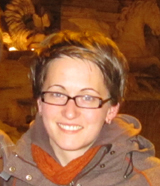 |
Tatiana Lugovaya contributed the ECG-ID Database, which she created as part of her master's thesis on biometric identification using the ECG, at the Electrotechnical University "LETI", Saint-Petersburg, Russian Federation. |
 |
Thomas Heldt, of the Laboratory for Electromagnetic and Electronic Systems and the Laboratory for Computational Physiology at MIT, contributed the 21-compartment model of the cardiovascular system used in the research version of CVSIM. |
 |
Thomas Penzel, formerly at the University of Marburg, contributed the recordings and apnea annotations for the Apnea-ECG Database created for the PhysioNet/Computers in Cardiology Challenge 2000. |
| Verena Schulte-Frohlinde, formerly at Boston University, contributed the Heartprints software package. | |
 |
Wei Zong, formerly of the Laboratory for Computational Physiology at MIT and the Margret and H.A. Rey Laboratory for Nonlinear Dynamics in Medicine at the Beth Israel Deaconess Medical Center, has made numerous professional contributions to many components of PhysioNet, including a QRS detector and an ABP pulse detector. |
 |
Yossi Ashkenazy, formerly of Boston University, is the author and contributor of software for multifractal analysis of time series. |
We would be grateful for corrections and suggestions, and for photos of those
mentioned but not pictured above.
If you would like help understanding, using, or downloading content, please see our Frequently Asked Questions.
If you have any comments, feedback, or particular questions regarding this page, please send them to the webmaster. Comments and issues can also be raised on PhysioNet's GitHub page.
Updated
Tuesday, 22 January 2019 at 10:17 EST